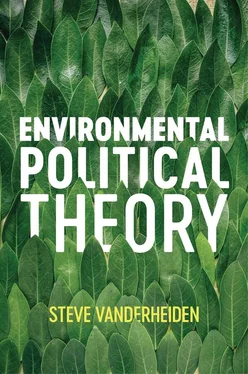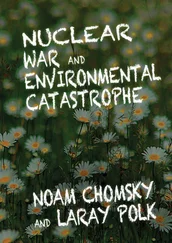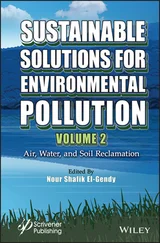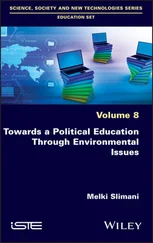Ecological limits and US politics
Within the United States, the reception of ecological limits would lead to changes in the partisan alignment around environmental protection. The conservation movement that preceded the environmental movement as the dominant vision for reforming the relationship between humans and their environment largely appealed to (with its main nongovernmental organizations mostly led by) white, male, and upper-middle-class resource users. The landmark environmental laws adopted in the late 1960s and early 1970s (the National Environmental Policy Act, Clean Water Act, Endangered Species Act, etc.) enjoyed bipartisan support in the US Congress and were championed by the Republican President Richard Nixon, who also presided over the founding of the Environmental Protection Agency. California Republican House member Pete McCloskey served as the co-chair of the first Earth Day in 1970, with numerous members of both parties in the House and Senate claiming strong environmental credentials. For generations, protection of the environment enjoyed bipartisan support, which would begin to erode after 1972, in part due to the way in which the idea of ecological limits had been received and translated into policy.
By the 1980s, changes within the US Republican Party led to an abandonment of Nixon’s environmental leadership and its replacement with the deregulatory and obstructionist politics of the Reagan administration, with the widening of partisan polarization on environmental issues in Congress beginning with its shift to the right in the early 1990s. As Dunlap, McCright, and Yarosh show, this widening partisan gap is reflected in widely disparate attitudes and beliefs about climate change, with those identifying as Republicans, in the electorate as well as government, increasingly embracing a particular version of one of the three possible responses to ecological limits to be considered next: supporting business as usual (i.e. enacting no new environmental protections as well as rolling back existing ones) on the basis of climate science denial, which shows similar patterns of partisan polarization. 13
The environmental movement, by contrast, increasingly (if haltingly and inconsistently) moved away from what I shall, below, call the “eco-fortress” response (characterized by a desire to maintain exclusive control over scarce resources at the expense of the disadvantaged) that was characteristic of the early conservation movement, and toward what I call the “just transition” response, which aims to protect ecological goods and services for all. In doing so, it embraced multilateral cooperation and centralized environmental regulation, at the same time that US conservatives were rejecting these. The idea of ecological limits could not be ignored, but how the idea was received gave rise to widely disparate and competing political visions. Some chose science denialism or other forms of dismissal, while others saw limits as justifying the exclusion of others from the benefits of development or enjoyment of increasingly scarce ecological goods and services, and still others saw the challenge as requiring a new focus on equity in understanding the causes of and solutions to environmental problems. To those three kinds of response and to their implications we shall now turn.
One kind of reaction to the emergence of ecological limits is to deny that such limits require the reevaluation of any existing ideals or practices at all. In one form, this response involves the contestation, attempted suppression, or denial of the science behind such limits in rejecting imperatives for action to mitigate environmental problems. A model for this strategy had been set in the 1960s, with the chemical industry threatening to sue Houghton Mifflin and the New Yorker to prevent the 1962 publication of Rachel Carson’s Silent Spring , then mounting an expensive public relations campaign to discredit it (including the circulation to US media outlets of a parody entitled “The Desolate Year,” claiming that Americans would not be able to grow enough food to survive without pesticides), along with vicious ad hominem attacks against Carson herself. Half a century later, the Competitive Enterprise Institute (which has also been active in climate science denial) continues to malign Carson by falsely claiming on its rachelwaswrong.orgwebsite that her “false alarm” on the dangers of DDT is responsible for the suffering and death of millions from bans on its anti-malarial uses 14(in fact, the chemical’s use to combat malaria was explicitly allowed in the 1996 Stockholm Convention on Persistent Organic Pollutants, and it continues to be used for such purposes in Africa and Asia).
This model was also used in the US tobacco industry’s strategy for avoiding smoking-related lawsuits by what the majority opinion in United States v. Philip Morris (2006) describes as a conspiracy to defraud the public “with zeal, with deception, with a single-minded focus on their financial success, and without regard for the human tragedy or social costs that success exacted.” The industry’s regulatory avoidance strategy of contesting the scientific consensus and creating doubt about the scientific basis for the dangers of smoking created a playbook that would later be used to contest the existence of ecological limits or resist pressures for regulatory responses to them. David Michaels notes of this strategy of “manufacturing uncertainty” that “the vilification of threatening research as ‘junk science’ and the corresponding sanctification of industry-commissioned research as ‘sound science’ has become nothing less than the standard operating procedure for parts of corporate America.” 15Climate science denial is perhaps the most prominent use of this model, but it has also been used against scientific research on acid rain, biodiversity loss, and animal pain and suffering.
Both uses involve the politicization of science , or intentional effort to deceive policymakers or the public about scientific facts in order to promote the narrow financial interests of industry, a strategy that has been central to the US anti-environmental movement and is increasingly being used elsewhere to similar effect. Following the template advocated by then-corporate lawyer (and later Supreme Court Justice) Lewis Powell in his 1971 “Attack on the American Free Enterprise System” memo, corporations began in the early 1970s to establish contrarian sources of expertise in defense of corporate interests against what Powell characterized as anti-capitalist critique “from the college campus, the pulpit, the media, the intellectual and literary journals.” Powell’s memo, which was quoted at length in the 1973 establishment of the Pacific Legal Foundation 16(an industry-sponsored legal advocacy group designed to oppose environmental regulations that would also play a role in the anti-environmental Wise Use movement 17), describes much of the strategy of anti-environmental foundations (Olin, Coors, Scaife, Koch, Bradley, etc.) and the free-market “think tanks” that they established to obfuscate science on behalf of industry. 18They pursue their advocacy goals through industry-sponsored contrarian science and other public relations efforts to discredit mainstream scientific research, in a campaign to deceive the public about the scientific bases of environmental problems and thereby to delay calls for stronger regulatory protections against environmental degradation.
Under the Trump administration, this politicization of science has included not only the president’s own expressed climate science denialism but also the replacement of scientists with industry advocates on key regulatory bodies, the termination of numerous science advisory posts and commissions, the muzzling of government scientists and scrubbing of their research from agency websites, and even the pressuring of National Oceanic and Atmospheric Administration (NOAA) weather forecasters to corroborate a false claim by the president about whether Hurricane Dorian was expected to threaten Alabama in September of 2019. Its disregard and disdain for science-based decision making became so anomalous and alarming that the bipartisan National Task Force on Rule of Law & Democracy describes Trump administration politicization of government science and research as having reached a “crisis point” in obfuscation and denialism that includes “almost weekly violations of previously respected safeguards” and “undermine[s] the value of objective facts themselves.” 19
Читать дальше












